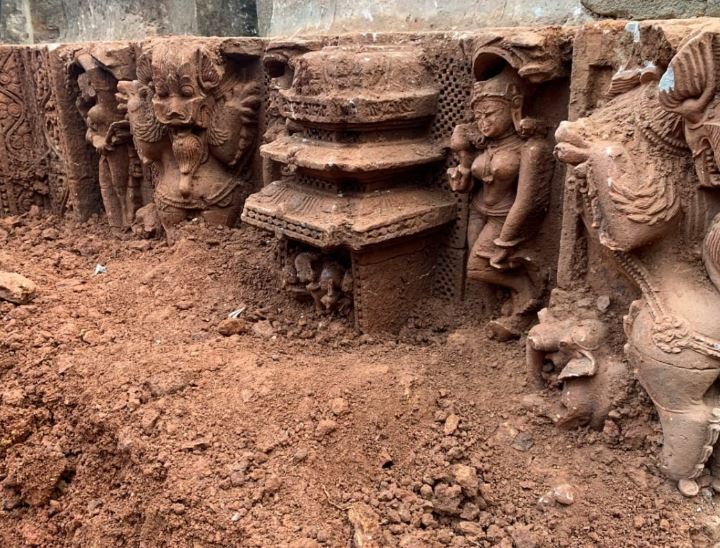Bhubaneswar: A day after an ASI team discovered an idol of ‘Mahisasurmardini’ while clearing the ‘garbhagriha’ (sanctum sanctorum) of a partially-buried temple behind the Bhabani Shankar temple here, heritage lovers demanded that the ground penetration radar survey report of the area close to Shree Lingaraj Temple be made public.
This was the second such discovery in the state capital. The Archaeological Survey of India (ASI) team had in February this year, discovered an idol of Lord Vishnu while unearthing the ruins of another ancient temple buried in the premises of Suka Sari temple in the Old Town area of Bhubaneswar.
The Mahisasurmardini idol was suspected to be in another temple next to Suka Sari temple close to Shree Lingaraj Temple in the old town area of the city. The newly found idol is believed to be a 1400-years-old idol or 7th-century BC, the ASI said.
Apart from the Mahisasurmardini idol, several other inscriptions and sculptures have been found from the temple site, ASI Superintending Archaeologist (Bhubaneswar circle) Arun Malik said.
Historian Anil Dhir, who has been at loggerheads with the government on the ongoing beautification project in the city, said there are many such sites in the areas cleared by the authorities.
Dhir claimed that both the ASI and the state government were apprised that the area close to Sukasari temple housed many such temples under the ground. Rampant excavations were carried out and many valuable carved panels were destroyed or dumped off, Dhir alleged.
“Why Ground Penetration Radar survey report of the entire area, conducted by IIT Gandhinagar last year, has not been made public?” Dhir asked, adding that there are many more such buried structures, broken temples and idols in the vicinity.
Heritage explorer and expert Deepak Nayak, said ASI should not announce that the idol recovered from underneath the ground as 1400 years old.
Stating that such a speculation is “wrong”, Nayak said only the upper portion of the idol has been excavated.
“The age of any Mahisasurmardini sculpture can be identified considering the iconography of the demon the goddess is slaying. In Odishan iconography, the demon in the form of a buffalo, or in a composite form having the head of a buffalo and a human form can be assigned to a period prior to the 9th/10th Century C.E., during the rule of the Somavamsis dynasty in Odisha.
“In the later Somavamsi and Eastern Ganga period, the demon was depicted in a full human form. To determine the age by only the upper portion is wrong, only after it is fully excavated can the age be determined,” he said.
PTI
